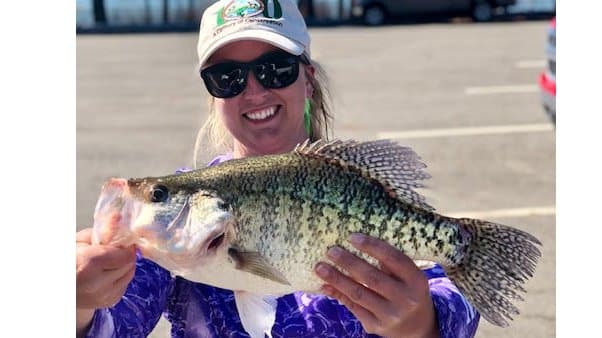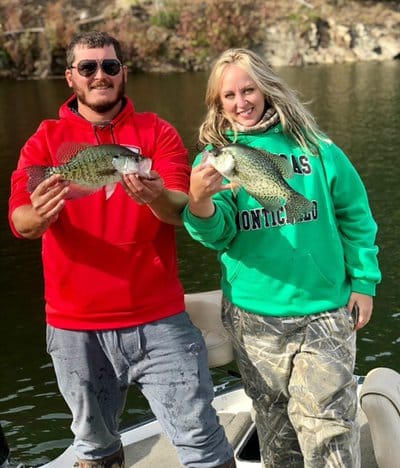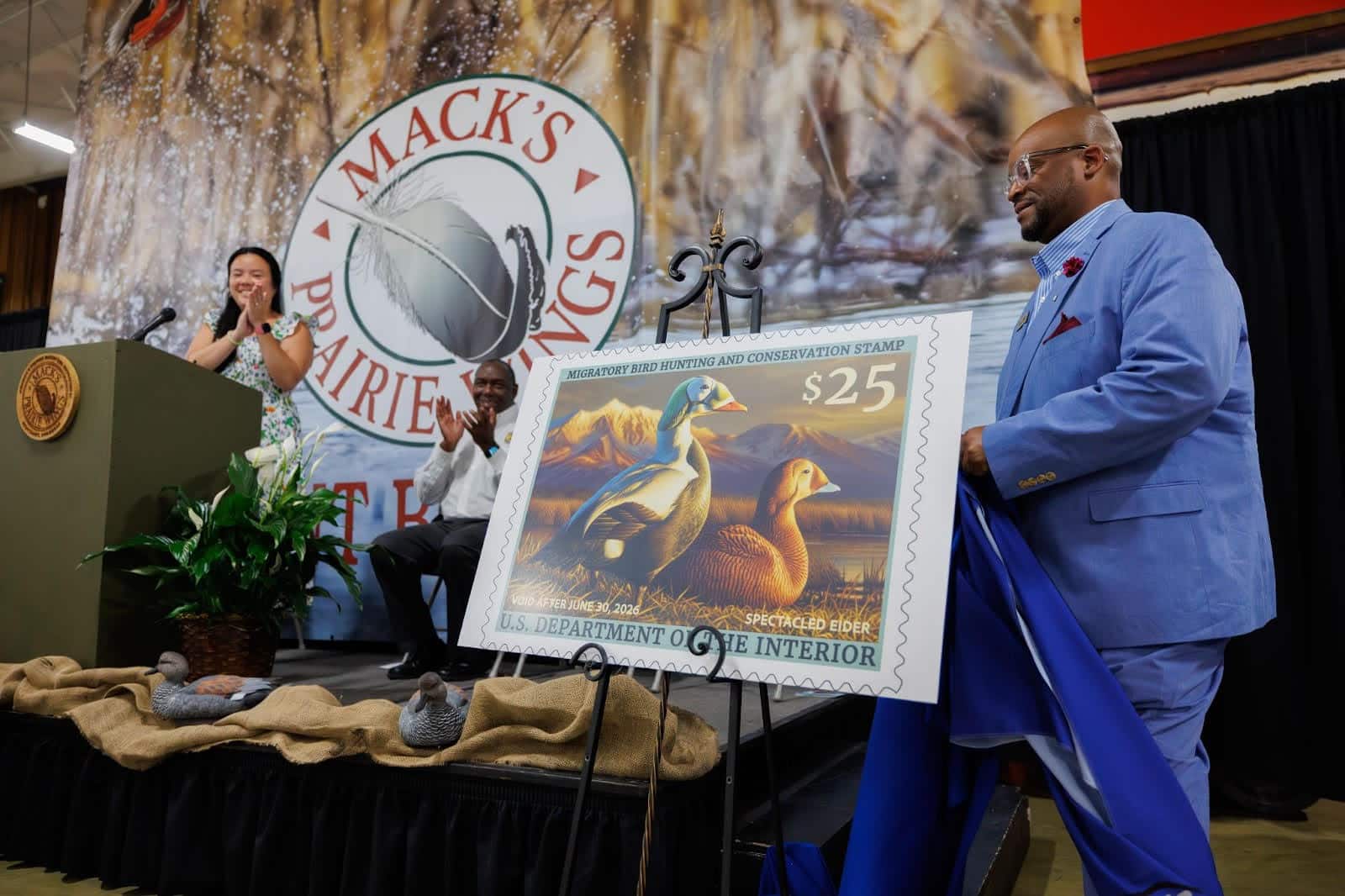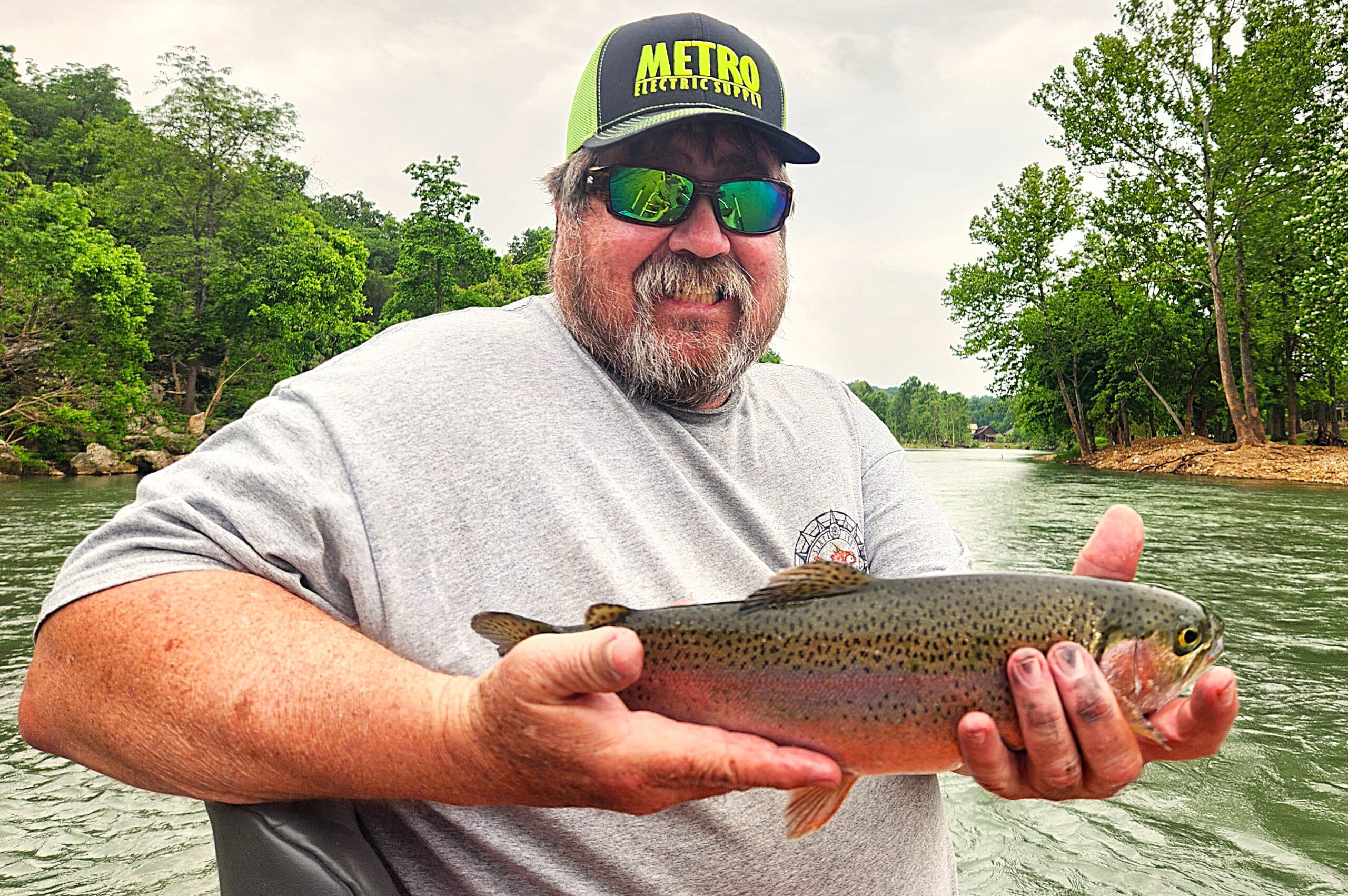Fishing formulas for papermouths
ON 04-14-2021

April 14, 2021
Randy Zellers
Assistant Chief of Communications
LITTLE ROCK — With the crappie spawn in full swing, many anglers have ditched their catfish poles and bass-fishing rods and headed to the bank for some of the best-tasting fish to swim in Arkansas waters. With a slew of spinners, crankbaits, grubs and other bait choices available, we asked three crappie-fishing fools who work for the Arkansas Game and Fish Commission a simple question: “When you look at the hook, what’s on the end of your line?”
Yung’s Old Faithful
Andy Yung is regional fisheries supervisor in the AGFC’s Camden office. He also is one of the AGFC’s most die-hard crappie chasers. His passion for these fish isn’t just evident in his off-work hours, either. Yung is chair of the AGFC Fisheries Division Statewide Crappie Team that works to monitor and improve crappie populations in lakes and rivers throughout the state. Crappie were the fish he cut his teeth on growing up in Illinois.
“My family farms, so when we finally got to take a break from work, it would be summer,” Yung said. “It wasn’t the best time to fish, but it taught me how to fish for crappie in standing timber.”
The lakes Yung manages today are much different from the ones he fished growing up. The water of southern Arkansas reservoirs is much shallower than many lakes he fished back home.
“The lakes I used to fish were much deeper,” Yung said. “The places I call deep in some of my favorite lakes here are about as shallow as I liked to fish there.”
No matter the depth, Yung’s favorite approach to crappie still relies on casting a jig.
“In deep water, you can jig vertically, but I try to stay off the fish and cast to them as much as I can. I typically stick with soft-plastic jig bodies instead of minnows, but it’s more about convenience. If I had a minnow tank in my house, I’d probably use them a lot more, but soft-plastics work well and are always around.
Yung sticks to black/chartreuse shad-style bodies and tubes. He also favors the Charlie Brewer Crappie Slider whenever he can find it.
“Black and chartreuse are the colors I like most, mainly because I tend to catch some really nice bream on that color as well as crappie,” Yung said. “I’m normally casting a 1/16-oz. Jighead on fluorocarbon line to feel the bite. The Fluorocarbon line sinks a little faster than monofilament too.”
Yung says casting for crappies usually means bringing along a good supply of jigheads.
“If you’re not getting snagged occasionally, you’re not fishing in the right place for crappie,” Yung said. “You can sometimes straighten the hook with a steady pull on the line and get your lure back, but you need to be prepared to lose a few if you’re fishing brush, it’s just part of it.”
Connolly’s Crappie Thoughts
Sarah Connolly is an administrative assistant in the Enforcement Division at the AGFC’s headquarters in Little Rock. She’s also one half of the crappie fishing team that took home the first-place trophy at the Arkansas Bass Team Trail Crappie Tournament on Lake DeGray in March. She and her partner Cody Rhodes brought in seven crappie weighing 14.55 pounds with a 3.35-pound kicker to anchor the bag.

“The day before, we managed to get second place together in a team tournament on Nimrod,” Connolly said. “Tournament fishing has been a fun experience this year with my partner, who just started his own crappie guiding service.”
Connolly has been fishing since she was a child in Northwest Arkansas, but nearly all of her fishing until 2019 was from the bank.
“We didn’t have a boat, but we always fished at the fishing derbies at the AGFC’s Centerton hatchery when I was growing up,” Connolly said. “When I started fishing with Cody, it was something we could do together and have a good time with. Plus, we both love to eat crappie. I’d pick it over just about anything except maybe walleye.”
Connolly says she and Rhodes stick to jigs during their crappie fishing forays as well.
“That’s just what works for us: single-pole jigging with jigs,” Connolly said. “You can change the color, shape and aspect of a jig countless ways to get a reaction from fish, but you can’t really change much about a minnow. We just like to be a bit more hands-on.”
Black and chartreuse is a top color for Connolly as well, but she says water clarity will play a large role in the decision.
“We want brighter colors and blacks for muddy water, but will change to more natural colors if you can see your lure at 2 feet or deeper,” Connolly said. “We used to use Bobby Garland jig bodies, but have switched to Crappie Assassin jigs recently. Both brands have great colors and shapes, but the Crappie Assassins are a little tougher so they last longer. We also use K9 Hi-Vis Fluorocarbon fishing line in 6-lb. Test. Its strength, low memory and ability to see it at night makes it my go-to.”
Connolly says one of the main mistakes she sees some anglers make is to get too close to their target. Instead, she suggests staying off of them as much as possible to prevent spooking fish.
“We have forward-facing sonar and you can definitely see a lot of fish spook when the boat gets close.”
Schroeder’s Selection
No Arkansas crappie story can be complete without at least one mention of Craig D. Campbell Lake Conway Reservoir in Mayflower. The largest lake ever built by a state wildlife agency is at the top of the list for crappie destinations in The Natural State. Matt Schroeder not only is the AGFC’s fisheries management biologist over the region including Conway, he’s spent as many hours as anyone chasing crappie on its waters since joining the AGFC in 2001.
“I’m a huge fan of a Bobby Garland Baby Shad,” Schroeder said. “It has a single tail that gives a lot of lifelike action and a good profile. My second favorite lure would be a Crappie magnet, especially when I’m dipping cypress trees on Conway.”
Schroeder primarily fishes lakes that have stained or dingy water.
“Overcup, Harris Brake and Conway all have dingy water filled with stumps and cypress,” Schroeder said. “That’s the sort of fishing that I cut my teeth on and is what I’m most comfortable with.”
When it comes to a choice of jig or minnow, Schroeder leans toward plastics as well, but throws in a curve.
“If you’re after big crappie, use both,” Schroeder said. “Big fish like big profiles, and the biggest fish I have caught have come from a jig tipped with a minnow. Something with chartreuse on the body and a pink jighead with big eyes seems to be the best for Conway.”
Schroeder’s advice to anglers after a mess of fresh crappie fillets: be stealthy.
“Where I fish is really close-quarters,” Schroeder said. “Overhanging limbs and brush prevent you from backing off and casting, so you have to be right in there with the fish. Minimize noise as much as possible and stay off the trolling motor whenever you can. If you blast a stump with your trolling motor’s prop wash, the fish aren’t going to hang around. Keep moving and hit as many trees as you can until you figure out where the crappie are positioning that day. Sometimes they’ll be right up against the wood, and other days they may be suspended away from it. Each day is going to be a little different. But that’s why we keep fishing. That and the way the crappie taste.”
Recent News
Subscribe to Our Weekly Newsletter E-mails
Don’t miss another issue. Sign up now to receive the AGFC Wildlife Weekly Newsletter in your mailbox every Wednesday afternoon (Waterfowl Reports are published weekly during waterfowl season and periodically outside the season). Fishing Reports arrive on Thursdays. Fill in the following fields and hit submit. Thanks, and welcome!


